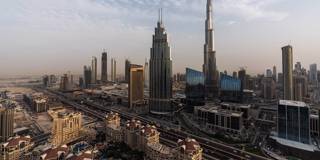With a Minister for Artificial Intelligence and a Museum of the Future, Dubai wants to promote itself as a forward-thinking model for other metropolises. But a city known for energy-hungry skyscrapers and resource-intensive megaprojects will have a hard time leading the way in a world focused on sustainability.
DUBAI – “Connecting minds, creating the future,” the slogan of World Expo 2020, is everywhere in this city. The ongoing event, which opened a year late in October 2021, is the first of its kind since the beginning of the COVID-19 pandemic. Few other places in the world are as future-oriented as Dubai. But what kind of future does Dubai want? The city has established itself as a model for the emerging urban centers of Asia and the Middle East, so its choices today could have far-reaching consequences in the future.

DUBAI – “Connecting minds, creating the future,” the slogan of World Expo 2020, is everywhere in this city. The ongoing event, which opened a year late in October 2021, is the first of its kind since the beginning of the COVID-19 pandemic. Few other places in the world are as future-oriented as Dubai. But what kind of future does Dubai want? The city has established itself as a model for the emerging urban centers of Asia and the Middle East, so its choices today could have far-reaching consequences in the future.